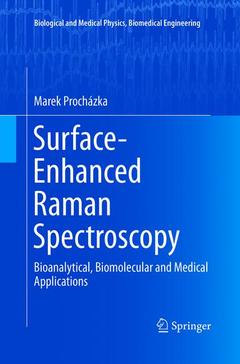Description
Surface-Enhanced Raman Spectroscopy, 1st ed. 2016
Bioanalytical, Biomolecular and Medical Applications
Biological and Medical Physics, Biomedical Engineering Series
Author: Prochazka Marek
Language: English
Subjects for Surface-Enhanced Raman Spectroscopy:
Publication date: 03-2019
221 p. · 15.5x23.5 cm · Paperback
Publication date: 12-2015
Support: Print on demand
Description
/li>Contents
/li>Comment
/li>
This book gives an overview of recent developments in RS and SERS for sensing and biosensing considering also limitations, possibilities and prospects of this technique. Raman scattering (RS) is a widely used vibrational technique providing highly specific molecular spectral patterns. A severe limitation for the application of this spectroscopic technique lies in the low cross section of RS. Surface-enhanced Raman scattering (SERS) spectroscopy overcomes this problem by 6-11 orders of magnitude enhancement compared with the standard RS for molecules in the close vicinity of certain rough metal surfaces. Thus, SERS combines molecular fingerprint specificity with potential single-molecule sensitivity. Due to the recent development of new SERS-active substrates, labeling and derivatization chemistry as well as new instrumentations, SERS became a very promising tool for many varied applications, including bioanalytical studies and sensing. Both intrinsic and extrinsic SERS biosensing schemes have been employed to detect and identify small molecules, nucleic acids and proteins, and also for cellular and in vivo sensing.




